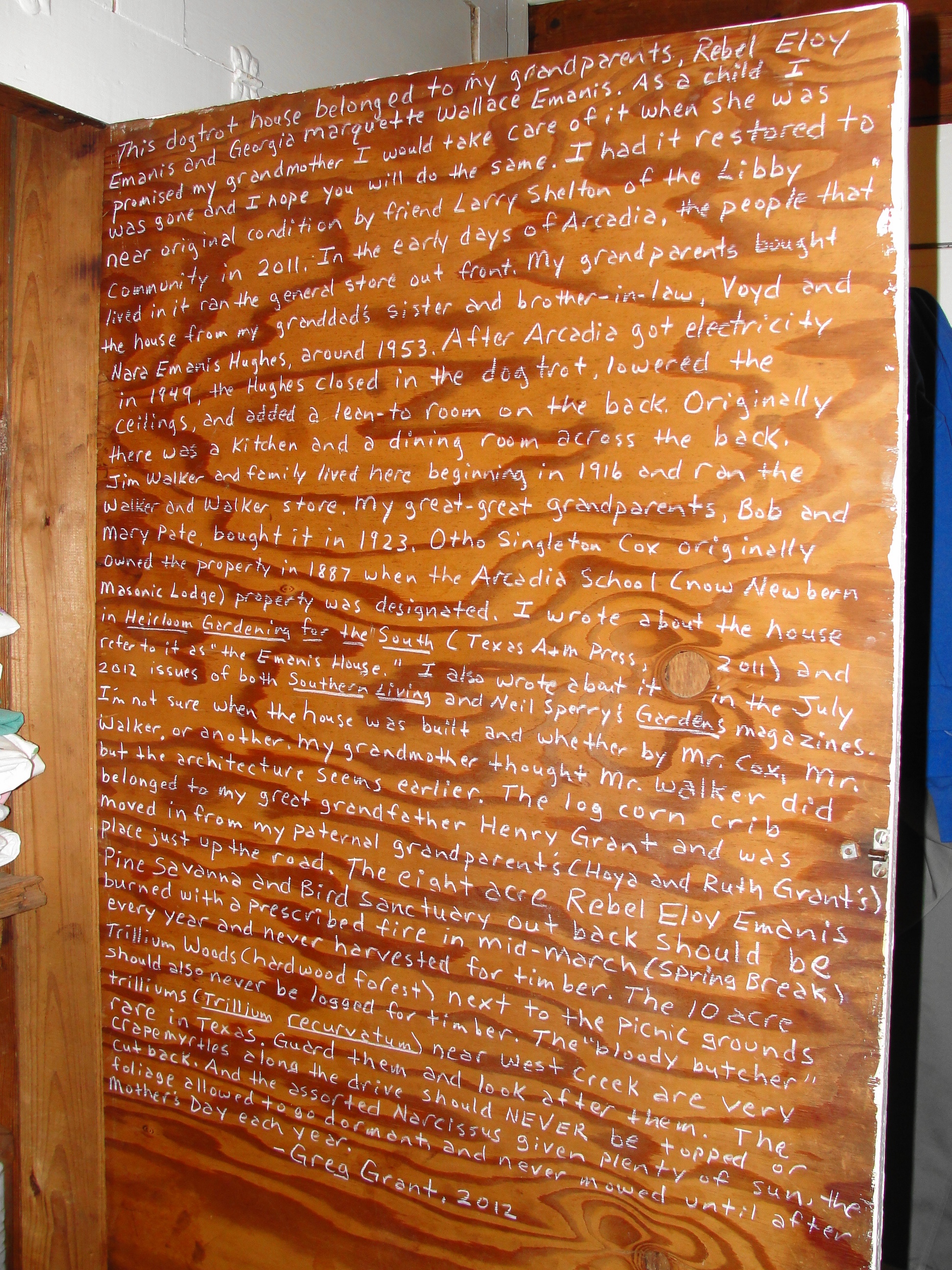Voices from Small Places - Arcadia, TX
G. Grant
March 29, 2014
Arcadia, Texas
Photograph #1
Title: Bathroom Cabinet Door
"Because I left instructions inside a bathroom cabinet for the next owner of my house. I can only hope they love it as much as I do."
The message on the cabinet door reads as follows:
"This dogtrot house belonged to my maternal grandparents, Rebel Eloy Emanis and Georgia Marquette Wallace Emanis. As a child I promised my grandmother I would take care of it when she was gone and I hope you will do the same. I had it restored to near original condition by friend Larry Shelton (Osage Woodworks) of the Libby community in 2011. In the early days of Arcadia the people that lived in it ran the general store out front. My grandparents bought the house from my granddad's sister and brother-in-law, Voyd and Nara Emanis Hughes, around 1953. After Arcadia got electricity in 1949, the Hughes closed in the dogtrot, lowered the ceilings, and added a lean-to room on the back. According to a drawing by my grandmother's aunt Vergie Pate Pesarra there was originally a kitchen and dining room across the back when she lived here as a child. Jim Walker lived here beginning in 1916 and ran the Walker and Walker store. My great-great grandparents, Bob and Mary Pate, bought it in 1923. Otho Singleton Cox originally owned the property in 1887 when the Arcadia School (now Newbern Masonic Lodge) property was designated. I wrote about the house in Heirloom Gardening for the South (TAMU Press, 2011) and refer to it as "the Emanis House." I also wrote about it in the July 2012 issues of both Southern Living and Neil Sperry's GARDENS I'm not sure when the house was built and whether by Mr. Cox, Mr. Walker, or another. My grandmother thought Mr. Walker did, but the architecture seems earlier. The log corn crib belonged to my great grandfather Henry Grant and was moved in from my paternal grandparents (Hoya and Ruth Grant's) place just up the road. The 8-acre Rebel Eloy Emanis Pine Savanna and Bird Sanctuary out back should be burned with a prescribed fire in mid-March (Spring Break) every year and never harvested for timber. The 10 acre Trillium Woods (hardwood forest) next to the picnic grounds should also never be logged for timber. The crape myrtles should never be topped. And the assorted Narcissus given plenty of sun, the foliage allowed to go dormant, and never mowed until after Mother's Day each year. -Greg Grant, 2012"
